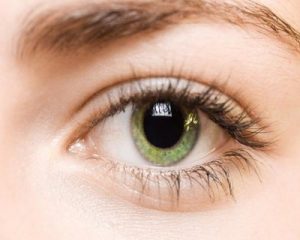- Home
- Editorial
- News
- Practice Guidelines
- Anesthesiology Guidelines
- Cancer Guidelines
- Cardiac Sciences Guidelines
- Critical Care Guidelines
- Dentistry Guidelines
- Dermatology Guidelines
- Diabetes and Endo Guidelines
- Diagnostics Guidelines
- ENT Guidelines
- Featured Practice Guidelines
- Gastroenterology Guidelines
- Geriatrics Guidelines
- Medicine Guidelines
- Nephrology Guidelines
- Neurosciences Guidelines
- Obs and Gynae Guidelines
- Ophthalmology Guidelines
- Orthopaedics Guidelines
- Paediatrics Guidelines
- Psychiatry Guidelines
- Pulmonology Guidelines
- Radiology Guidelines
- Surgery Guidelines
- Urology Guidelines
Electroretinogram can avoid retinal damage in OCT patients

Egypt: Pattern electroretinogram (PERG) can help in the early detection of nerve and retinal damage in patients with ocular hypertension compared with optical coherence tomography (OCT), suggests a recent study published in the Journal of Glaucoma. This would allow early treatment resulting in the restoration of ganglion cell function before the occurrence of any irreversible damage.
The researchers recommend the utilization of PERG in combination with glaucoma investigations to avoid focal defect in the retinal nerve fibre layer.
Eman Turkey, Ophthalmology, Memorial Institute of Ophthalmic Research, Egypt, and colleagues evaluated if pattern electroretinogram can early detect retinal ganglion cells dysfunction in ocular hypertension.
The study included 3 groups control, primary open-angle glaucoma and ocular hypertension groups with 30 eyes in each group. Visual fields were examined using automated perimetry with the central 24-2 program. OCT was done to assess the neuroretinal rim area, vertical cup/disc ratio and average superior and inferior retinal nerve fiber layer thickness.
PERG data: the mean P50 and N95 latency were significantly higher in the POAG group and the OHT group compared to the control group
Key findings of the study include:
- The mean P50 and N95 amplitude were significantly lower in the POAG group and the OHT group compared to the control group.
- In the POAG group, there was a significant negative correlation between PSD on one hand and P50 amplitude and N95 amplitude.
- The mean deviation was positively correlated with P50 amplitude and N95 amplitudes.
- There was no significant correlation between PERG parameters and OCT parameters.
- In the OHT group, PERG parameters did not correlate with visual field and OCT parameters.
"PERG can detect the dysfunctional but still live retinal ganglion cells earlier than OCT in OHT cases, allowing the early start of treatment that can restore the ganglion cell function before irreversible damage occurs," write the authors.
"PERG is a useful imaging modality for early diagnosis and determining treatment intervals," concluded the authors.
To read the complete study log on to doi: 10.1097/IJG.0000000000001325

Disclaimer: This site is primarily intended for healthcare professionals. Any content/information on this website does not replace the advice of medical and/or health professionals and should not be construed as medical/diagnostic advice/endorsement or prescription. Use of this site is subject to our terms of use, privacy policy, advertisement policy. © 2020 Minerva Medical Treatment Pvt Ltd